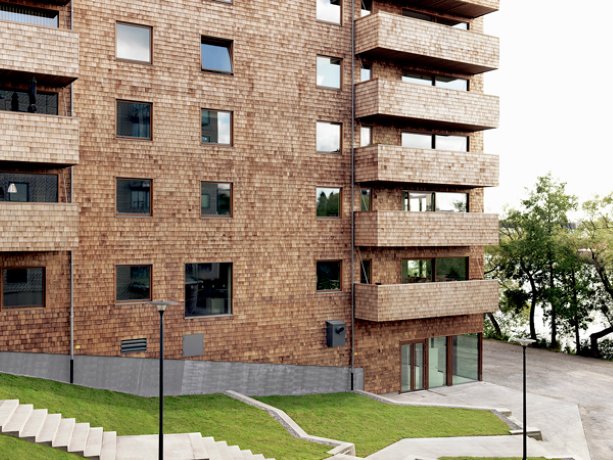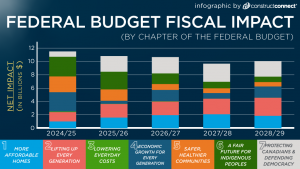Sweden, like Canada, has an abundance of forests.
But unlike Canada, the Scandinavian country is starting to take advantage of its natural resource to prefabricate timber buildings of all types and sizes.
Swedish developer Folkhem is one of those leading the charge, illustrating the environmental advantages of wood construction. But there are other reasons for choosing wood.
Folkhem’s Strandparken, a 34-unit twin eight-storey housing complex just outside Stockholm, was built with cross-laminated timber (CLT) in seven months, largely because 80 per cent of the development was prefabricated — right down to the insulated walls and windows, Sandra Frank, the company’s marketing director, told delegates during a panel seminar recently at the Toronto Wood Solutions Fair.
She said it takes Swedish forests only about one minute to produce the wood (120 cubic metres) required to the build Strandparken.
To sustain Sweden’s forests, government regulations stipulate that three trees be planted for every tree cut down, according to H.E. Per Sjogren, the Swedish Ambassador to Canada.
Sjogren told the seminar that forestry products have a wide range of usage in Sweden, and "it is an important research area between Sweden and Canada in our universities."
"Today, we no longer have any height restrictions on wooden buildings," he added.
Frank said with population explosions in urban areas around the world, wood is a sensible medium for intensification in part because it minimizes costly disruptions on city streets during construction.
Mike Collins-Williams, a policy director with the Ontario Home Builders’ Association (OHBA), said at the seminar, held at the Toronto Metro Convention Centre, that "the missing middle (mid-rise housing) that Sweden does so well we are just starting to figure out in Ontario and Toronto."
He said residents in fast-growing Canadian cities need a "greater diversity" of housing options.
"Many consumers currently see the choice as either a shoebox in the sky (condo tower)…or a single family home," he said.
While the Greater Toronto Area is investing about $30 billion in transit in the region, Collins-Williams said there is "a disconnect" between municipal land-use authorities and provincial transit agencies that prevents opportunities for wood mid-rise developments.
Neighbourhoods should be pre-zoned, but currently mid-rise and highrise projects are reviewed by the city "case-by-case, and it can take years to get through the process," he explained.
Both developments face similar hurdles and periods to get approval so it is no surprise developers often propose the more profitable option, highrise housing, Collins-Williams stated.
Planners need to "up-zone" most areas in Toronto — particularly along transit corridors — to smooth the path to urban intensification, he said.
A tool called the community planning permit system that combines the site plan approval, building permit and zoning — "a one-stop shop" that expedites the development process, is available to Ontario municipalities but most have not taken advantage of it, Collins-Williams told delegates.
"Part of that is because politicians want to exert control over development in their communities," he added.
He said eliminating "cost-prohibitive" parking requirements for developments in neighbourhoods well served by public transit would also help to turn the page for the wood mid-rise.
"We (municipalities) are forcing more parking to be built than even consumers are demanding," he claimed.
Fellow panellist Tad Putyra, president and COO of Great Gulf Low Rise, said his takeaway from visits to wood manufacturing plants in Sweden and Germany is that new levels of automation are on the rise that incorporate robotics equipment that not long ago was the reserve of auto-making plants.
"It’s a really an exciting time," said Putyra.
Among the most advanced factories in the world is one in northern Sweden that delivers modules for wood mid-rises to Stockholm and other cities in the nation.
"I think plants like this will become a model for all of us," he said.
Steven Street, technical director at Ontario Wood Works, said in the past eight to nine years the industry has "dramatically changed" its views of factory-built wood panels.
The benefits of prefabrication are obvious, he said.
"Why would you try to get a high-performance building system to work when you actually nailed it together in minus 30 outside? Factory-built solutions…it just makes sense for us to go down that path," he added.












Recent Comments
comments for this post are closed